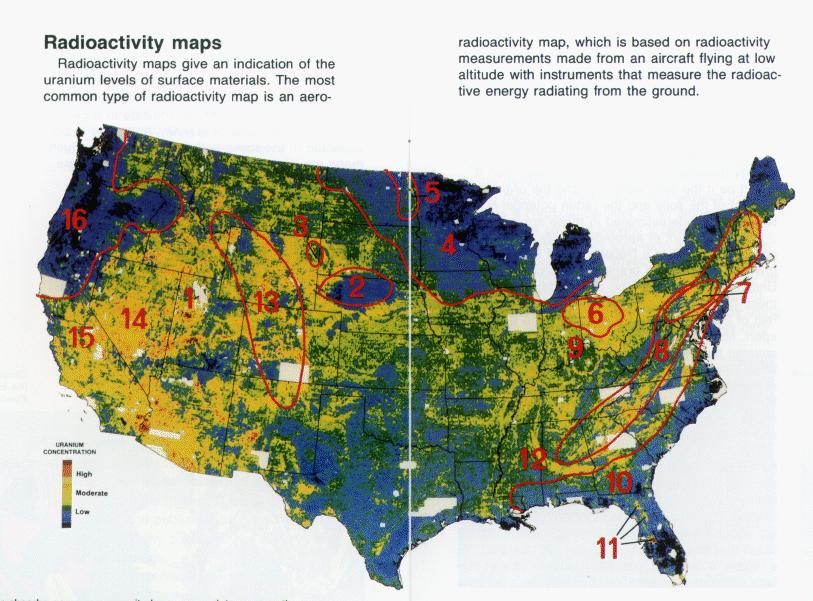|
Dirty Bombaka Radiological Dispersal Device, RDD
Properly called a radiological dispersal device, dirty bombs are conventional explosives wrapped in radioactive debris, so that the explosion spreads contaminated material over a wide area. No one has set off a dirty bomb yet, as far as we know, but it's such a simple concept that it is almost certainly only a matter of time. Dirty bombs really only have one function -- terrorism -- because they aren't any more deadly that conventional explosives. In fact, to make the "dirty" part work you have to sacrifice a certain amount of effectiveness on the "bomb" part, since you don't want to vaporize the payload.
The really shocking thing about dirty bombs is that no one has used one yet, considering how easy it is to get your hands on radioactive garbage. First off, there's the former Soviet Union. No matter what reassuring line of goods you've been sold about how the Russians are keeping their nuclear waste and nuclear weapons out of the reach of evildoers, it's total bullshit. Rose Gottemoeller, of the Carnegie Endowment for International Peace, surveyed some nuclear sites in Russia. She told PBS NewsHour:
They didn't have any bars on its windows, just had a big wooden door with a huge key, like a medieval-size key, that they turned to open the door, and when you walked in there, basically down in the floor there were hundreds of buckets of plutonium. When I went into the facility one day, one of the, one of the technicians pulled one of them out of the floor and handed it to me and said, "feel it -- it feels warm. It's full of plutonium." BUCKETS OF PLUTONIUM JUST SITTING BEHIND A BARELY LOCKED WOODEN DOOR!!!!! Are you worried now?? In addition to outrageous stories like this, it's well known that Russia's nuclear arsenal is being "protected" by a group of soldiers making poverty-level wages working for an army that's being downsized by the day -- not exactly the way to inspire loyalty. Just to make matters worse, many of Russia's breakaway republics are home to Muslim fundamentalist insurgencies tied to Osama bin Laden.
Padilla wasn't the first alleged dirty bomber on U.S. soil either. In the mid-1990s, Mohamed Loay Bayazid was president of the Benevolence International Foundation in Chicago. His previous job had been shopping for nuclear material on behalf of bin Laden, according to court documents in several different terrorism cases. A U.S. citizen (as was Padilla), Bayazid had traveled to the Sudan looking for uranium, according to al Qaeda informants. While in the U.S., he came to the attention of law enforcement officials on more than one occasion, but he managed to flee the country some time around 1998. As if the former Soviet Union wasn't bad enough, there are other sources for dirty bomb materials. Like, just for instance -- EVERYWHERE! According to the U.S. Nuclear Regulatory Commission:
Radioactive materials are widely used at hospitals, research facilities, industrial and construction sites. These radioactive materials are used for such purposes as in diagnosing and treating illnesses, sterilizing equipment, and inspecting welding seams. For example, the Nuclear Regulatory Commission, together with 32 states which regulate radioactive material, have over 21,000 organizations licensed to use such materials.Also, there are the even lower profile, and exponentially less secure, facilities that use employ radioactive materials for fun and profit, the NRC explains, like exploiting "self-luminous qualities" to make "exit signs" and "watch dials." However, the NRC adds reassuringly, "the vast majority of these sources are not useful for constructing an RDD." Whew!
However, that presumption fails to account for the NRC's own estimate, as of 1999, that 47 percent of U.S. nuclear plants had significant security vulnerabilities. These range from the obvious, like not enough guards, to the only-slightly-less-obvious, like the Ohio nuclear plant whose safety systems were knocked offline by a computer virus in 2003. Since that 1999 study, the NRC has taken some very important steps to enhance security, such as not telling people about that percentage any more. Also, they have "increased patrols, augmented security forces and capabilities, (created) additional security posts, (installed) additional physical barriers, (added) vehicle checks at greater stand-off distances, enhanced coordination with law enforcement and military authorities, (added) more restrictive site access controls for all personnel; and expanded, expedited and (required) more thorough employee background checks." They've also added no-fly zones for sensitive times and in sensitive locations to try to avoid the rather more simple technique of crashing an airplane into a power plant, an approach to dirty bombing which allows for only so much prevention. That's the bad news, and admittedly, there is quite a bit of it. Here's the good news: A dirty bomb attack is probably not a lot more dangerous than a plain old bomb attack. Most of the easily available toxic radioactive material is problematic for use in a dirty bomb, one way or another. Some of it just isn't toxic enough. Other materials aren't available in sufficient quantities to spread effectively over several city blocks, or even just one. Statistically speaking, between wind and dispersal patterns, it's virtually impossible to use a bomb to deliver a lethal dose of radiation to a group of people outside of an enclosed space. Even with a very limited target, such as a political convention or the crowd at a football game, a dirty bomb will kill more people with the explosion than with the radiation. "There's limited lethality. You would have to swallow and breathe in the material before you could become a casualty," Mark Gwozdecky of the International Atomic Energy Agency told the BBC. Some people would likely get sick in the short term, some more people might get sick over the long, long term (i.e., getting cancer when they're 85), but you don't have to party like it's 1999. If you are exposed to a dirty bomb, there's a good chance you'll be just fine. The appeal of the dirty bomb, of course, is the freakout. If you told the residents of any average U.S. city that a half ton of radioactive waste had just been dumped on their heads, they're going to be afraid, and the purpose of terrorism, as we all know, is to terrify. But it's not entirely clear whether a group like al Qaeda is interested in the freakout simply for its own sake. Apart from targeted political assassinations, almost every report of al Qaeda planning indicates that the group wants body counts, the kind of large body counts that a dirty bomb is not likely to produce. While the terror network has obviously made efforts to get radioactive materials, Khalid Shaikh Mohammed allegedly ordered Jose Padilla to scale down his terrorism career from a planned dirty bomb attack to blowing up high-rises using natural gas. Between the expense and difficulty of getting the material and the challenge of moving it into and around the U.S., dirty bombing doesn't get much bang for your buck. And Bayazid's uranium shopping in the 1990s appeared to be for the purpose of building a real live nuclear bomb, which is a much scarier prospect. You can't get much more bang for your buck than that.
Surviving A Dirty Bomb AttackTry the following tips from the Department of Homeland Security:
1. A radiation threat or "Dirty Bomb" is the use of common explosives to spread radioactive materials. So there you have it! Step One: Hide behind a radiation shield, which you no doubt have lying around the house. Step Two: Get the hell out of town. Step Three: Stay glued to your TV.
Your tax dollars at work!
|
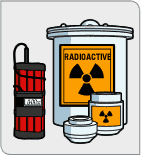
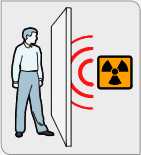
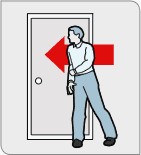
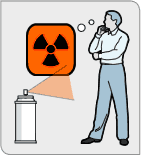
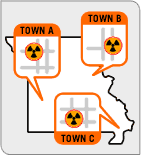
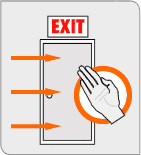
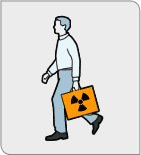
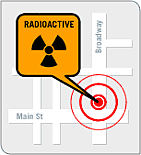

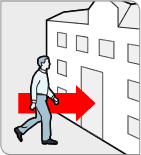
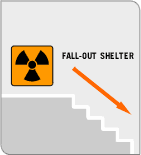
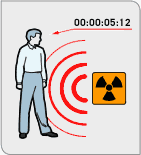
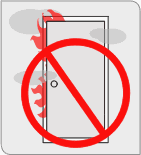
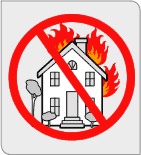
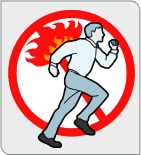

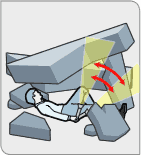

 Because the dirty bomb is such an improvised thing, and because it's still a theoretical thing, there is no fixed configuration. Virtually any conventional explosive can be used to power the explosion, which then presumably spreads radioactive debris over a large, densely populated area. While the bomb part isn't anything special, the radioactive part obviously takes some doing. So we can all breathe a great big sigh of relief, knowing that the responsible governments of the world would never let dangerous radioactive materials fall into the wrong hands.
Because the dirty bomb is such an improvised thing, and because it's still a theoretical thing, there is no fixed configuration. Virtually any conventional explosive can be used to power the explosion, which then presumably spreads radioactive debris over a large, densely populated area. While the bomb part isn't anything special, the radioactive part obviously takes some doing. So we can all breathe a great big sigh of relief, knowing that the responsible governments of the world would never let dangerous radioactive materials fall into the wrong hands.  Bin Laden and his
Bin Laden and his 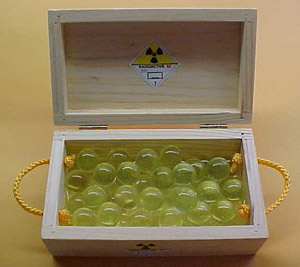 Notably missing from the above list, of course, are the more than 100 active nuclear power plants in the United States, which are presumed secure, as are the "spent fuel pools" where millions of gallons of toxic radioactive waste are stored.
Notably missing from the above list, of course, are the more than 100 active nuclear power plants in the United States, which are presumed secure, as are the "spent fuel pools" where millions of gallons of toxic radioactive waste are stored. 